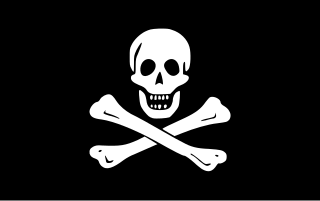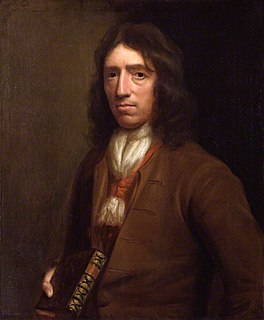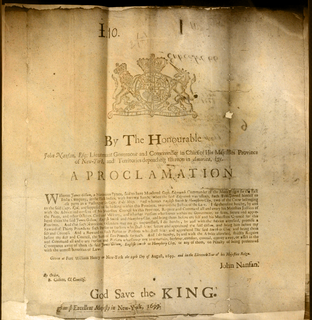Related Research Articles

Piracy is an act of robbery or criminal violence by ship or boat-borne attackers upon another ship or a coastal area, typically with the goal of stealing cargo and other valuable goods. Those who conduct acts of piracy are called pirates, while the dedicated ships that pirates use are called pirate ships. The earliest documented instances of piracy were in the 14th century BC, when the Sea Peoples, a group of ocean raiders, attacked the ships of the Aegean and Mediterranean civilizations. Narrow channels which funnel shipping into predictable routes have long created opportunities for piracy, as well as for privateering and commerce raiding. Historic examples include the waters of Gibraltar, the Strait of Malacca, Madagascar, the Gulf of Aden, and the English Channel, whose geographic structures facilitated pirate attacks. Privateering uses similar methods to piracy, but the captain acts under orders of the state authorizing the capture of merchant ships belonging to an enemy nation, making it a legitimate form of war-like activity by non-state actors. A land-based parallel is the ambushing of travelers by bandits and brigands in highways and mountain passes.

Buccaneers were a kind of privateers or free sailors particular to the Caribbean Sea during the 17th and 18th centuries. First established on northern Hispaniola as early as 1625, their heyday was from the Restoration in 1660 until about 1688, during a time when governments were not strong enough and did not consistently attempt to suppress them.

William Dampier was an English explorer, pirate, privateer, navigator, and naturalist who became the first Englishman to explore parts of what is today Australia, and the first person to circumnavigate the world three times. He has also been described as Australia's first natural historian, as well as one of the most important British explorers of the period between Francis Drake and James Cook, he "bridged those two eras" with a mix of piratical derring-do of the former and scientific inquiry of the later. His expeditions were among the first to identify and name a number of plants, animals, foods, and cooking techniques for a European audience; being among the first English writers to use words such as avocado, barbecue, and chopsticks. In describing the preparation of avocados, he was the first European to describe the making of guacamole, named the breadfruit plant, and made frequent documentation of the taste of numerous foods foreign to the European palate such as flamingo and manatee.
This timeline of the history of piracy in the 1680s is a chronological list of key events involving pirates between 1680 and 1689.

The Golden Age of Piracy is a common designation for the period between the 1650s and the 1730s, when maritime piracy was a significant factor in the histories of the Caribbean, the United Kingdom, the Indian Ocean, North America, and West Africa.

Michel de Grammont was a French privateer. He was born in Paris, Kingdom of France and was lost at sea in the north-east Caribbean, April 1686. His privateer career lasted from around 1670 to 1686 during which he commanded the flagship Hardi. He primarily attacked Spanish holdings in Maracaibo, Gibraltar, Trujillo, La Guaira, Puerto Cabello, Cumana and Veracruz.

Charles Swan was a reluctant buccaneer. Captain Swan was forced into piracy by his crew in the 1680s, and proceeded to write letters to the owners of his ship Cygnet in London, begging them to intercede with James II of England for his pardon – even as he looted his way up and down the coastal areas of South America.
William Knight was a 17th-century English buccaneer and pirate known for joining privateering expeditions against Spanish colonies in Central and South America.

Edward Davis or Davies was an English buccaneer active in the Caribbean during the 1680s and would lead successful raids against Leon and Panama in 1685, the latter considered one of the last major buccaneer raids against a Spanish stronghold. Much of his career was later recorded by writer William Dampier in A New Voyage Round the World (1697).

James Gilliam, or James Kelly was an English pirate and buccaneer active off the coasts of Spanish South and Central America and later in the Indian Ocean. He sailed under several different pirate captains but is best remembered for his brief association with William Kidd.
Basil Ringrose was an English buccaneer, navigator, geographer and author.
Josiah Raynor (1665–1743) was a pirate active in the Red Sea. Before he was briefly a pirate captain, he was a sailor on the Batchelor’s Delight on which he sailed alongside William Dampier.
George Dew, George Hout or George d'Hout (1666–1703) was a pirate, privateer, and buccaneer. He once sailed alongside William Kidd and Thomas Tew, and his career took him from Newfoundland to the Caribbean and the coast of Africa.
Francois Groginet was a French buccaneer and pirate active against the Pacific coast of Spanish Central America.
John Pro was a Dutch pirate best known for leading a pirate trading post near Madagascar.
John Read was an English buccaneer, privateer, and pirate active from South America to the East Indies to the Indian Ocean.
Francis Townley was an English buccaneer, privateer, and pirate active against the Spanish on the Pacific coast of Central and South America.
John Cook was an English buccaneer, privateer, and pirate.
Jean Tristan was a French corsair (buccaneer) and pirate active in the Caribbean and against Spanish holdings in Central and South America.
Duncan Mackintosh was a pirate who cruised the East Indies, the Indian Ocean, and the coast of Africa.
References
- ↑ Laprise, Raynald. "Les flibustiers de l'Amérique (1648-1688)". La Diable Volant. Retrieved 13 April 2018.
- 1 2 Thornbury, Walter (1861). The monarchs of the Main. London: Routledge, Warne, & Routledge. Retrieved 23 August 2019.
- ↑ Day, A. Grove (Arthur Grove) (1968). Pirates of the Pacific. New York: New York, Meredith Press. Retrieved 23 August 2019.
- 1 2 Grey, Charles (1933). Pirates of the eastern seas (1618-1723): a lurid page of history. London: S. Low, Marston & co., ltd. Retrieved 26 June 2017.
- ↑ Fox, Edward Theophilus (2013). 'Piratical Schemes and Contracts': Pirate Articles and Their Society 1660-1730. Exeter UK: University of Exeter. Retrieved 8 September 2017.
- ↑ Marley, David (2010). Pirates of the Americas. Santa Barbara CA: ABC-CLIO. ISBN 9781598842012 . Retrieved 12 September 2017.
- ↑ Hill, S. Charles (1919). Carnac, Sir Richard Temple (ed.). "EPISODES OF PIRACY IN THE EASTERN SEAS". Indian Antiquary a Journal of Oriental Research. Delhi: Swati Publications. 48: 217-219. Retrieved 4 October 2019.
